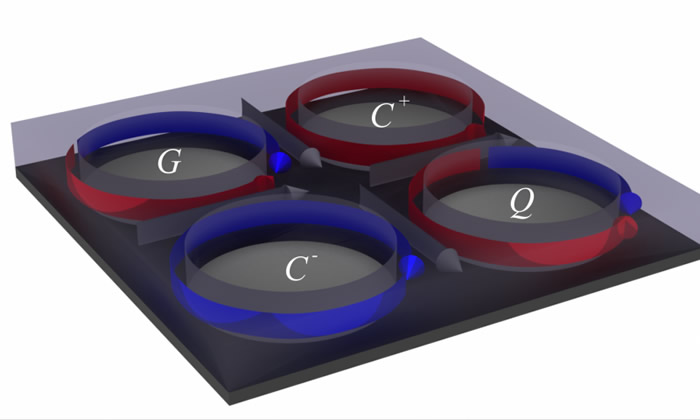Cobalt grid reliably programmed at room temperature
Scientists from the Helmholtz Zentrum Dresden-Rossendorf (HZDR) have shown how a cobalt grid can be reliably programmed at room temperature. In addition, they have discovered that for every hole (‘antidot’), three magnetic states can be configured in a nanometer-scale magnetic perforated grid. The results have been published in the journal Scientific Reports.
Physicist Rantej Bali from the HZDR, together with scientists from Singapore and Australia, designed a special grid structure in a thin layer of cobalt in order to program its magnetic properties. Colleagues from the National University in Singapore produced the grid using a photolithographic process similar to that currently used in chip manufacture. Approximately 250 nanometer-sized holes, so-called antidots, were created at regular intervals with interspaces of only 150nm in the cobalt layer. In order to be able to stably program it, the Singapore experts followed the Dresden design, which specified a metal layer thickness of approximately 50nm.
At these dimensions, the cobalt antidot grid displayed interesting properties. Dr. Bali’s team discovered that with the aid of an externally applied magnetic field, three distinct magnetic states around each hole could be configured. The scientists called these states ‘G’, ‘C’ and ‘Q’. Dr. Bali says, “By optimizing the antidot geometry, we were able to show that the spins, or the magnetic moments of the electrons, could be reliably programmed around the holes.”
Building blocks for future logic
Since the individually programmable holes are situated in a magnetic metal layer, the grid geometry has potential use in computers that would work with spin-waves instead of the electric current. “Spin-waves are similar to the so-called Mexican waves you see in a football stadium. The wave propagates through the stadium, but the individual fans—in our case, the electrons—stay seated,” explained Dr. Bali. Logic chips utilizing such spin waves would use far less power than today’s processors, because no electrical current is involved.
Many magnetic states can be realized in the perforated grid so that the spin-waves can, for example, be assigned specific directions. This could allow for a higher processing speed in future logic chips.
“Our perforated grids could also operate as components for future circuits working with spin-waves,” said Dr. Bali. Doctoral candidate Tobias Schneider is now investigating the dynamics developed by the spin-waves in such perforated grids. Among other aspects, he is participating in the development of special computer programs making possible the complex calculation of the magnetic states in perforated grids.
More information: Phys.org


